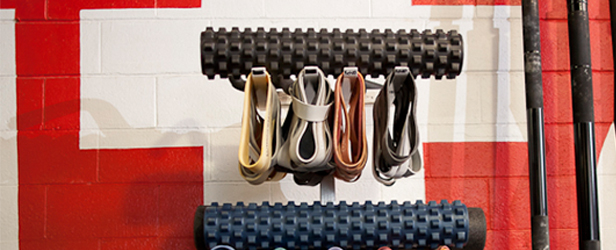
Shoulder/scapular dissociation
In hip dissociation, we established that dissociation in this context is the separation of movement at a joint. So in the hip example, one leg is performing hip extension while the other is performing hip flexion.
Just as dissociation of hip mechanics are integral to many athletic movements, the shoulders and scaps also require a great degree of dissociation in our movements. Running, throwing, jumping, swinging, dribbling, and swimming all require different, simultaneous movements at the shoulder and scapular joints. Whether it be shoulder flexion and extension, scapular protraction and retraction, adduction and abduction, internal rotation and external rotation, or elevation and retraction, many of our upper body movements require two different joint actions.
The problem with this is that most of our exercise selection is geared toward performing the simultaneous movements on each side (i.e., bench press, pull-up, barbell row, push-up, overhead press). Sure, we'll throw in some single-arm exercises here and there, but as touched upon in the hip dissociation article, while one arm is performing the work, the other arm is static and not moving. So while we're getting some unilateral work, it isn't performed at a degree to stress the two opposite movement patterns.
As stressed before, this isn't a call to totally change anyone’s programming or philosophy. It’s an idea or thought about how we train athletes. It could be a very valuable tool to teach scapular coordination (it’s amazing how hard it is for many people to control/move their scaps), strengthen these movement patterns, train contralateral stabilization, and kill two birds with one stone (train press and pull simultaneously). So here are some exercises that can stress and strengthen these different movements. Play around with them and see what you think.
Standing horizontal push/pull:
From the standing position, you’re really going to stress contralateral stabilization, coordination, and balance to go along with the obvious benefits on upper body pushing and pulling. Any kind of exercise where we can get our athletes to their feet and stress them standing will have great carryover to the field.
Create a solid base or, as I like to say, set a foundation for the movement to be generated from. If you aren't set from the ground up, you’re setting yourself up for a poor resulting movement.
Kneeling vertical push/pull:
This variation now works that scap/shoulder dissociation in a vertical plane. Grab a dumbbell and cable machine and give it a whirl. This is also good because it forces the athlete to be in a tall kneeling position, so we get some glute control as well and different directional stresses through our core.
Supine horizontal push/pull:
In this variation, we're in a typical dumbbell bench situation with a band attached to a pull-up bar above. While this does takes some stabilization stresses away that are seen in standing or kneeling variations, it allows for heavier loading of both the push (use a heavier dumbbell) and pull (use a thicker band). This is tougher than it looks, especially with any kind of moderate to heavy load. It also helps to have a partner pull the band down or lift the dumbbell up to you.
Conclusion
Separating movement and actions can be of great benefit in teaching coordination of the upper body. Our scaps and shoulders need to learn how to move freely and independently from the opposite side, and these dissociation exercises can help bridge that gap.
I would love to hear your thoughts on this topic. I fully understand that some of these are hard to set up and might not be applicable in large team settings, but they do provide training for an upper body pull, press, and core stability. If short on time or on a recovery day, these exercises might fit the bill and be just what the doctor ordered. So see what you think and go get ‘em!








